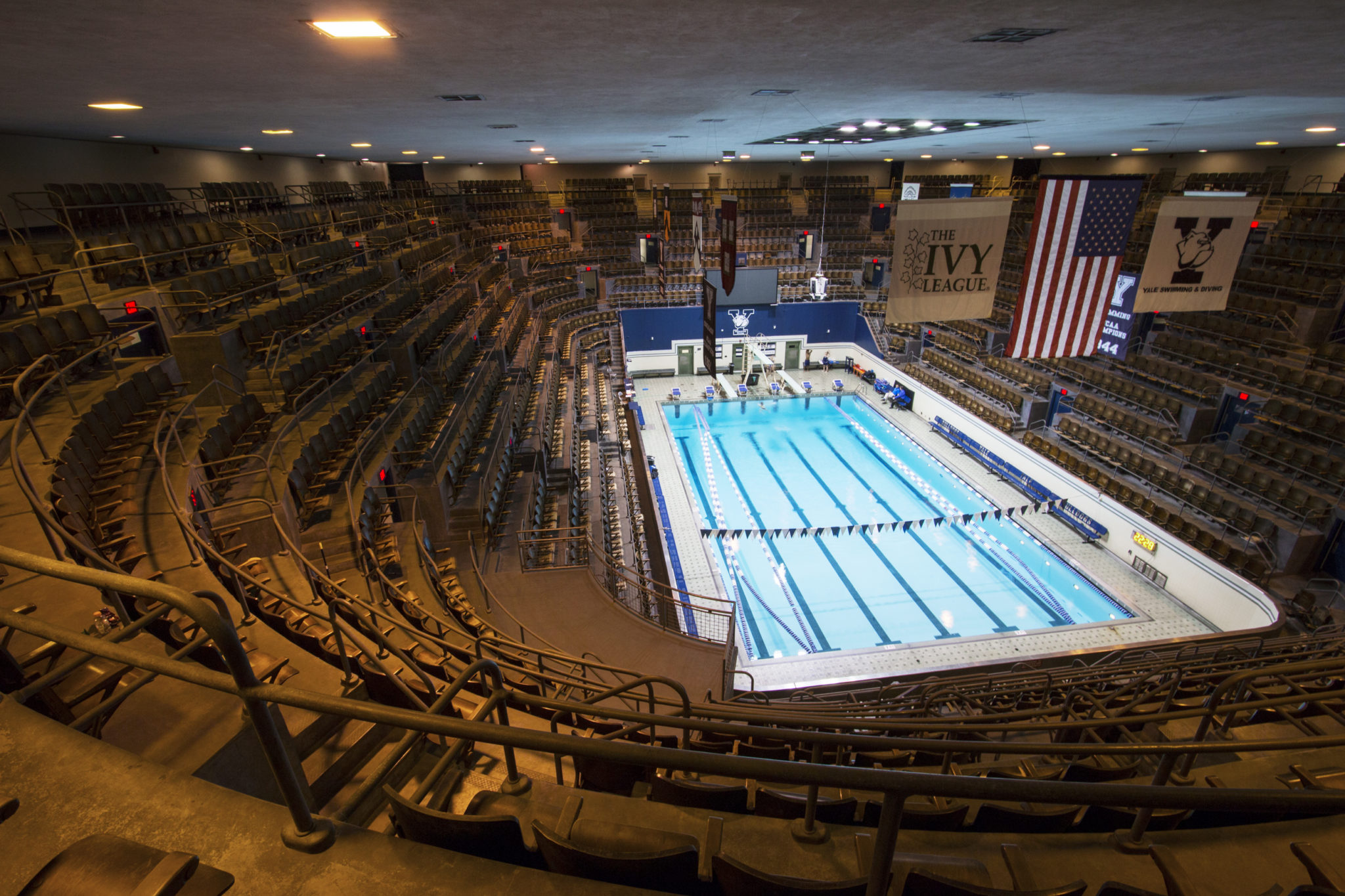
Fundraising efforts for the renovation of Kiphuth Exhibition Pool have stalled since a March 28, 2014 meeting between members of the Yale Swimming and Diving Association and University President Peter Salovey and have led the association to reconsider a more economical proposal to build a stand-alone facility near the Yale Bowl.
According to YSDA President Matthew Meade ’87, the project has $9.1 million in pledged donations, unchanged from November 2015 and far short of the $47 million price tag for the Kiphuth renovation, as the University has struggled to find a lead donor. In contrast, building a separate facility near the Bowl would cost $20 million.
“There hasn’t been any update,” women’s swimming and diving head coach Jim Henry said. “We’ve really been in a holding pattern.”
The entirety of the pledged $9.1 million has come from members of the swimming and diving teams’ alumni base, an active community with 1,800 members, Meade told the News. According to Henry, the teams and alumni are open to exploring more economical operations for the renovation, including the cheaper facility near the Bowl.
However, the University has not changed its commitment to the current $47 million plan. According to Vice President for Alumni Affairs and Development Joan O’Neill, the University was recently asked to reconsider the proposed stand-alone facility, but Yale has not acted upon that request.
“The only thing we have said was an imperative is to build a first-class pool,” said Greg Lawler ’69, an alumnus who has been involved in coordinating fundraising efforts. “If you’re going to build it, build it right.”
The pool renovation was added to the University’s list of approved capital projects after the March 2014 meeting, allowing Yale to present naming rights to potential lead donors. The proposal would push out the back wall of the current venue, extending the pool to 50 meters and nine lanes, and add a separate diving well.
Kiphuth Pool, which was constructed in 1932, presents several challenges for Yale’s swimming and diving teams. The pool is 25 yards long and six lanes wide, falling short of the 50 meters and eight lanes required to host the Ivy League Championships. As a result, Yale cannot host any competitions other than dual meets. However, Yale is not alone: Currently, only Brown, Harvard and Princeton are eligible to host the championships.
In addition to its spatial constrictions, Kiphuth Pool is difficult to compete in.
“Kiphuth has a lot of history and it’s amazing to walk into,” swimmer Isla Hutchinson-Maddox ’17 said. “Structurally, for fast swimming, it’s a terrible pool.”
While most modern swimming pools have a gutter that filters water as it’s pushed into the opposing wall, Kiphuth Pool lacks this feature. As a result, the pool’s flat walls push water back towards the swimmers. According to Hutchinson-Maddox, members of opposing teams warn each other to push off under the oncoming waves during races.
In addition, the swimming and diving teams compete in the same pool, preventing them from practicing together because the pool’s lane lines must be cleared before diving boards are set up. According to diver McKenna Tennant ’18, the diving teams usually have to practice from 2 p.m. to 4 p.m. while the swimming teams have the pool from 4 p.m. to 6 p.m., making it more difficult for divers to schedule classes.
Last season, the men’s and women’s teams finished fourth and first in the Ivy League standings, respectively.







